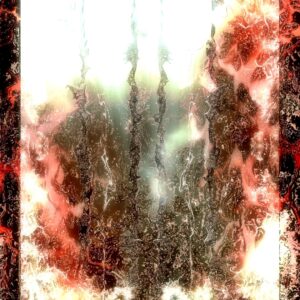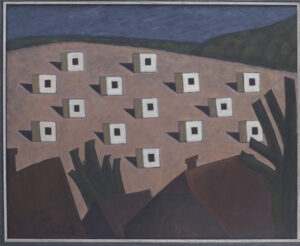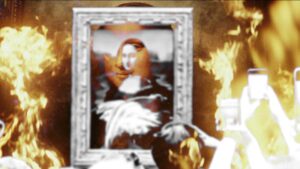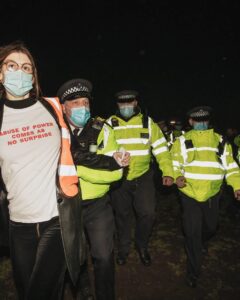Narrative refers to a spoken or written account of connected events, often more colloquially referred to as a “story.” The concept of narrative is significant in its relationship to the roles that Indigenous communities have been positioned in within the broader history of visual culture. Historically, the visual mediums of painting, photography, film, and now three-dimensional digital spaces, have relegated the image and subsequent idea of the Indigenous subject to the space of history. Whether in the form of Edward Curtis adorning Indigenous subjects in “traditional” garb, or museums predominantly featuring Native American and Indigenous “artifacts” rather than contemporary art, the authorship of the narrative about Indigenous peoples, histories, and cultures, has primarily been given to the colonizer. The wielding of this authorial power allows for the formation of a narrative that positions Indigenous peoples as the subject; not only of visual culture, but of the erasure, stereotyping, violence, and oppression that these images promote and, to a certain extent, condone. Additionally, it positions history, and to a larger extent, knowledge, as objective, and therefore positions the colonizer as the arbiter of knowledge. With this power, the prioritization and valorization of colonial narratives dominates. This narrative control has led settler colonial narrators to embellish and glorify the narrative of “Custer’s Last Stand” (1876, arguably more appropriately referred to as a “myth”) and maintains that Wounded Knee (1890) was a “battle” and not a massacre; a terminological justification that allows the United States government to ignore Native American requests that the medals of honor conveyed to 20 soldiers for their actions there be revoked. However, Indigenous communities, artists, and scholars are engaging in battles for cultural, political, and visual sovereignty to dissolve this established narrative and to write a new one.[1] As Linda Tuhiwai Smith asserts, the act of “claiming” is meant to “teach both the non-indigenous audience and the new generations of indigenous peoples an official account of their collective story.”[2] These newly crafted, or reasserted narratives (as colonial histories have additionally sought to silence their Indigenous counterparts) “contribute to a collective story in which every indigenous person has a place”[3] and seek not only to change the established story, but also to transition Indigenous peoples from the subject of the story to the story-teller.
Notes
[1] Michelle H. Raheja, “Reading Nanook’s Smile: Visual Sovereignty, Indigenous Revisions of Ethnography, and Atanarjuat (The Fast Runner)” in American Quarterly, Volume 59, Number 4 (2007): 1159-1185. Also see Michelle H. Raheja, Reservation Reelism: Redfacing, Visual Sovereignty, and Representations of Native Americans in Film (Lincoln and London: University of Nebraska Press, 2010).
[2] Linda Tuhiwai Smith, Decolonizing Methodologies: Research and Indigenous Peoples ( London: Zed Books Ltd, 2012), 145.
[3] Smith, “Twenty-Five Indigenous Projects,” 145.
About the author
Ashlee Bird (Western Abenaki) is a Native American game designer and PhD in Native American Studies. Her dissertation, “Representation and Reclamation: The History and Future of Natives in Gaming,” theorizes digital sovereignty, drawing on Native American studies, media studies, and game studies to address representations of Native American characters in video games. Beyond her academic writing, she has created three artworks, publicly exhibited seven times in group and solo exhibitions internationally. Bird is currently a Moreau Postdoctoral Fellow in the Department of American Studies at the University of Notre Dame.





